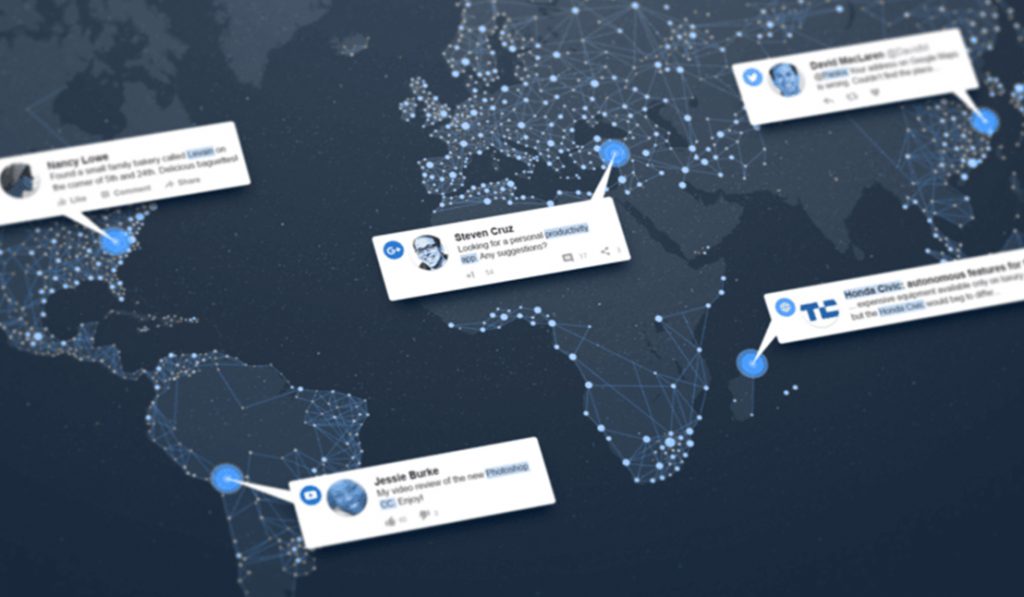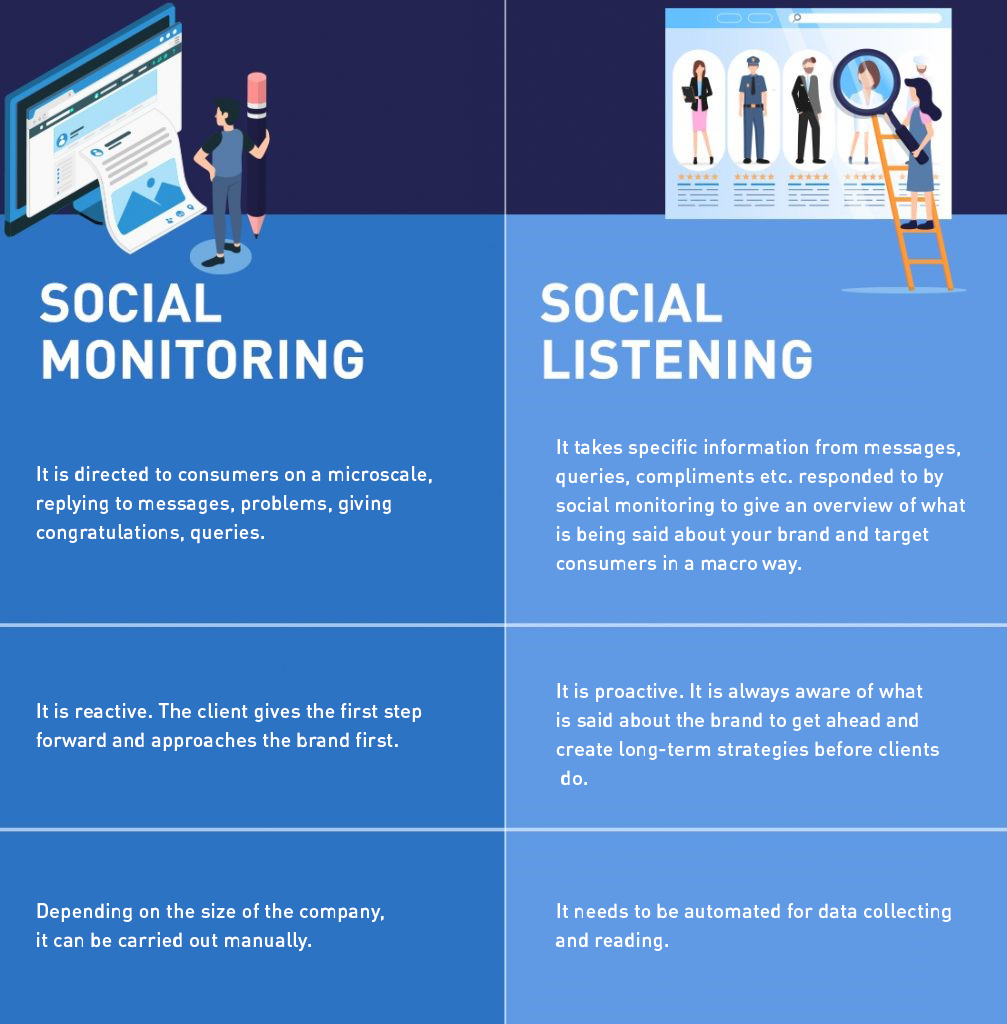 Glossary
Glossary
WHAT IS SOCIAL MONITORING AND SOCIAL LISTENING?
First things first, what is social monitoring?
In order to survive the world of the internet, and specifically, social media, it’s essential that you are always aware of what is being said about your brand or company.
With social monitoring, you receive valuable information that will help you know the opinions and comments of clients that have interacted with or will interact with your brand, either in person or online.
With that, you’ll be up to date with what consumers look for and what they don’t, all with the end goal of constantly upgrading and offering what they really expect and need from you.

Social monitoring is a tool that helps you identify the key needs and comments so as to improve your products and services.
This is done through constant monitoring of your communication channels, with the aim of obtaining meaningful information on what is being said about your brand online.
Through social monitoring, you can spot faults in your products and services, fix them, and consequently, avoid a crisis of reputation. Moreover, you can measure the impact of marketing campaigns, based off of the overall tone of comments (positive, negative, neutral).
So, social monitoring helps you keep in direct contact with consumers, in a way that makes them feel closer to the brand and more trusting. This creates a link with the customer and even builds brand love.
Social Monitoring vs Social Listening
Social monitoring is often confused with social listening. Both are measurement strategies and are related, but it’s important to know their differences and what they can do for your brand, either on their own or working hand in hand.
Understanding the difference between social monitoring and social listening strategies will allow you to carry them out correctly. You’ll be able to make the most out of them and work for your brand or company.
At the end of the day, both are essential to knowing what consumers say, need and expect from your brand as well as improving client experience and opinions.
Some key differences include:



